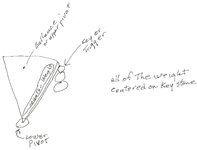Wallydraigle
Greenie
- Apr 2, 2010
- 18
- 0
Well, not so much avoid, since I'll have to be near them to find the treasure, lol, but how can I spot them, and "spring" them, or otherwise be safe around them? I don't want to be finally be so close to the treasure, and then be maimed or worse (  ) because I didn't know what to look for or how to handle a death trap. Thanks.
) because I didn't know what to look for or how to handle a death trap. Thanks.
 ) because I didn't know what to look for or how to handle a death trap. Thanks.
) because I didn't know what to look for or how to handle a death trap. Thanks.

 You must have a lot of experience working around death traps. If you have any "war stories" I'd like to hear about it.
You must have a lot of experience working around death traps. If you have any "war stories" I'd like to hear about it.
